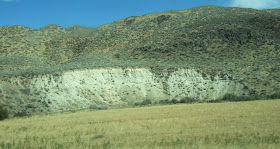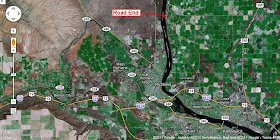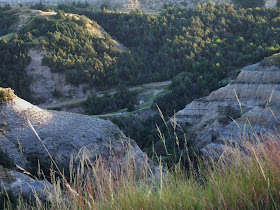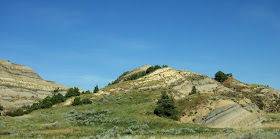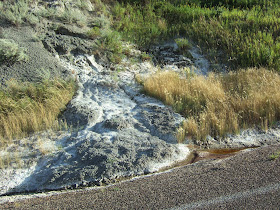Even if your not that interested in architecture and urban design, you will become so when in Chicago. Lots of great buildings and public spaces. And some geology in some of those buildings HERE or for a great resource on stone and buildings check out David Williams' stories-in-stone.
One of my favorite buildings in Chicago is the Tribune Building with its flying buttresses on the upper floor and Gothic touches.
Tribune Building left of center with flying buttresses
Entrance to the Tribune Building
I noticed a feature on the walls of the Tribune Building I had not noticed before. On the walk up to the entrance pictured above note the protruding objects embedded in the walls. These objects also had caught the attention of some French visitors as well as my own attention. The protrusions were rocks, stones and bricks taken from other buildings or places and cemented into and onto the walls of the Tribune Building.
Stones and building materials embedded within walls of the Tribune Building
Of course this led to a quest to find if there was a stone from Washington State. And sure enough there was a chunk of andesite from Washington State.
A piece of Washington in the Tribune Building
The Yellowstone hotspot was well represented with lava from Oregon, Idaho and Wyoming all possibly from the path of the hotspot over time:
Basalt from near the mouth of the Columbia River - I am not sure this is hot spot lava as it may be a more recent ocean floor basalt accreted to the North American margin.
Craters of the Moon basalt is very likely from the hotspot path
This piece of Wyoming looked is obsidian
One more rock in the walls of the building (there are 120 stones from around the world) is from Germany.
Basalt from Remagen Bridge across the Rhine River
A small group of Allied forces got a view of the Remagen Bridge in March 1944 and were surprised to see that it was still standing as the Germany forces had pulled back across the natural defense of the river and blown most of the bridges. An immediate change of invasion plans took place and Allied forces were immediately diverted to the Remagen Bridge before the Germans could destroy the bridge. My father was among those diverted and Remagen is where he began a full month on the front lines pushing into Germany. The bridge span did collapse from German shelling a few days after my father made the crossing, but the basalt support towers of the bridge are still standing.



























